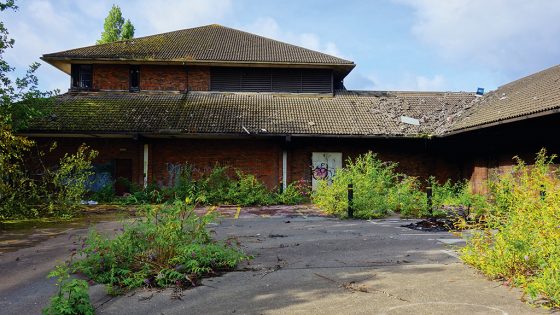The government has been warned that homes built under its plans to encourage greybelt development will be a “drop in the ocean” compared with the numbers needed to address chronic housing shortages.
Wrangles over the definition of greybelt land – parts of the green belt including wastelands and disused car parks – would also lead to “voluminous litigation and delay”, it was told.
Unlocking the development of the greybelt, which is defined as land making a limited contribution to the key purposes of the greenbelt, forms part of the government’s pledge to deliver 1.5 million homes over the next five years.
But an expert told the House of Lords’ built environment committee yesterday (28 October) that the policy may have little impact in practice and risked developments becoming enmeshed in lengthy legal disputes.
Paul Cheshire, emeritus professor of economic geography at the London School of Economics, said that without an extremely precise definition of the greybelt and a stronger presumption in favour of building, there would be “no significant change at all” in the number of houses built.
“On the margin, it will deliver some additional land, even despite the current 50 per cent requirement for affordable homes, but that will be just a tiny drop in the ocean of lack of housing supply,” he said.
On balance the change would be positive “but far less positive than the political cost of making these changes”, Cheshire added.
The highly local nature of the planning system – and the small number of local authorities with valid, up-to-date local plans – make it difficult to inject the wider interest into decision-making, he said.
“So, unless you’ve got a very clear-cut definition, which says ‘this is the greybelt, and there will be a presumption in favour of sustainable development when applications come forward on such land’, I think it will change very little because it’s so subjective and so susceptible to local lobbying,” he added.
Without a clear definition, Cheshire said he foresaw applications for greybelt development becoming bogged down in legal battles.
“One of the unintended consequences of this as it is drafted is that it will lead to voluminous litigation and delay as people argue about what is actually greybelt land or not greybelt land,” he said.
But Simon Ricketts, a partner at Town Legal, told the committee that fears of legal disputes over how land was to be classified would prove unfounded.
“People always worry that these issues are then going to get caught up in litigation,” he said. “They’re not, because the approach of the courts is very straightforward, which is that words have their commonsense meaning.
“It’s for decision makers to apply policy and for the courts to interpret policy in the case of real ambiguity, and we’ve seen from cases about very special circumstances that the courts have really pushed back on people trying to overengineer this.”
However, he said the introduction of greybelt as a designation may well lead to a greater degree of “planning by appeal”.
“In a way that’s inherent in what the government is proposing – it’s a more centralised approach, a more top-down approach to requiring authorities to look more positively than perhaps traditionally they’d like on development in greenbelt areas,” said Ricketts.
“Many applicants will take the view that their sites meet these criteria, authorities and their constituents may take a different view, and therefore it will go to appeal on many cases, and it will be for the inspectors of the Planning Inspectorate and for the secretary of state to really start to set the tone as to what amounts to a ‘limited contribution’.”

